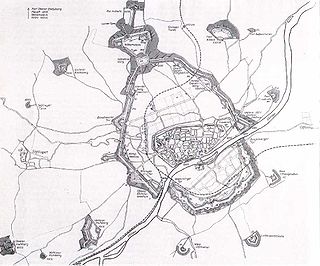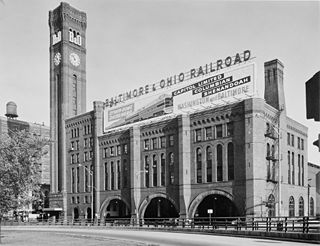 W
WThe Alhambra Theatre, Glasgow opened on 19 December 1910 at the corner of Waterloo Street and Wellington Street, Glasgow under the direction of Sir Alfred Butt and was acknowledged as one of the best equipped theatres in Britain, planned to accommodate 2,800 people.
 W
WThe Alloa Swing Bridge was a railway swing bridge across the River Forth that connected Throsk and Alloa as part of the Alloa Railway. The structure was in use from 1885 until 1968.
 W
WSee also Aviation Building The Aviation Building, also known as the Fritz Hotel, was a building located in Miami, Florida, United States. The building stood from 1927 to the mid-1970s when it was torn down and replaced. The address of the building was 3240 NW 27th Avenue which was 16 blocks east of the east end of runway 9/27 at Miami International Airport. The building was used for a number of purposes, none of which was a hotel.
 W
WThe Church of St Mary Major, formerly Exeter Minster, was a historic church and parish in the City of Exeter, Devon, dating from the 7th century. It pre-dated the first Exeter Cathedral by some five centuries, was rebuilt several times, but was finally demolished in 1971. It was situated to the immediate south-west of Exeter Cathedral, the site today being a grass lawn.
 W
WCitadellet (Citadel) was a 19th-century Norwegian fortress. The last day of military activity was in 1970. The fort was demolished in 1971.
 W
WThe Benjamin Davis House was a historic house located at 528 South Washington Avenue Lansing, Michigan. It was formerly listed on the National Register of Historic Places, but was demolished and delisted in 1972.
 W
WEmery, Bird, Thayer & Company was a department store in Downtown Kansas City that traced its history nearly to the city's origins as Westport Landing.
 W
WEquitable Building was a 35.91 m (117.8 ft), eight-story building at 30 Edgewood Avenue SE, in Atlanta, Georgia.
 W
WThe fortress of Ulm was one of five federal fortresses of the German Confederation around the cities of Ulm and Neu-Ulm. With its 9 km polygonal main circumvallation Ulm had the biggest fortress in Germany in the 19th century and it is still one of the biggest in Europe.
 W
WGrand Central Station was a passenger railroad terminal in downtown Chicago, Illinois, from 1890 to 1969. It was located at 201 West Harrison Street on a block bounded by Harrison, Wells and Polk Streets and the Chicago River in the southwestern portion of the Chicago Loop. Grand Central Station was designed by architect Solon Spencer Beman for the Wisconsin Central Railroad (WC), and was completed by the Chicago and Northern Pacific Railroad.
 W
WHotel des Indes was one of the oldest and most prestigious hotels in Asia. Located in Batavia, Dutch East Indies, the hotel had accommodated countless famous patrons throughout its existence from 1829 to 1971. Before being named Hotel des Indes, a name suggested by the writer Multatuli, it was named "Hotel de Provence" by its first French owner, and for a short spell went by the name "Hotel Rotterdam". After Indonesian independence it was renamed "Hotel Duta Indonesia", until it was demolished to make way for a shopping mall.
 W
WKirklee railway station was a railway station serving the Kelvinside area in the West End of Glasgow, Scotland.
 W
WNew College, Harrogate was an independent preparatory school in Harrogate, Yorkshire which amalgamated with Ashville College in 1930.
 W
WThe Old Shirehall was a municipal facility in Market Square, Shrewsbury, Shropshire. It was demolished in 1971 to make way for a retail and commercial centre.
 W
WRock Mill was cotton spinning mill in the Waterloo district of Ashton-under-Lyne, Greater Manchester, in England. It was built between 1891 and 1893 for the Ashton Syndicate by Sydney Stott of Oldham. Rock Mill was built on the site of Wilshaw Mill retaining and using the octagonal chimney. It ceased spinning cotton in the 1960s and was demolished in 1971; the site became the location for the town's first Asda supermarket, which opened in 1972, until Asda relocated to a much larger new store site in Cavendish Street in 1989.
 W
WSt Andrew's Church, London Road was a parish church in the Church of England in Derby, Derbyshire. It was built between 1864 and 1867 and demolished in 1971.
 W
WThe Summit Stake Tabernacle or "Coalville Tabernacle" was a meetinghouse of The Church of Jesus Christ of Latter-day Saints located in Coalville, Summit County, Utah.
 W
WThe Tees railway viaduct was a railway bridge in the county of Durham, England, which carried the South Durham and Lancashire Union Railway over the River Tees west of Barnard Castle.
 W
WTexas Mill was a cotton spinning mill in the Whitelands district of Ashton-under-Lyne, Greater Manchester, in England. It was built between 1905 and 1907 for the Ashton Syndicate by Sydney Stott of Oldham. It was destroyed in a massive fire on 22–23 October 1971. It had been re-equipped as a ring mill for spinning artificial fibres when it was destroyed.
 W
WThe Torquay Marine Spa was a spa and entertainment complex situated on a promontory overlooking Beacon Cove in the town of Torquay, Devon, England. The buildings included a ballroom, concert hall, sunlit conservatory and private bathing facilities. There was also a large public swimming bath open to the sea below these.
 W
WUniversity Hall is the main academic building at the Ohio State University in Columbus, Ohio. The building houses classrooms for several of the university's colleges and includes a museum on the ground floor.
 W
WThe Weber Stake Tabernacle, later known as the Ogden Pioneer Tabernacle, was a tabernacle belonging to The Church of Jesus Christ of Latter-day Saints. The tabernacle was constructed by Latter-day Saints in Ogden, Utah during the 1850s. The building stood for over one-hundred years, until it was razed in 1971 to make way for the Ogden Utah Temple.
 W
WWhitehall was the palatial summer estate at Narragansett Pier built by Captain Isaac Edward Emerson, inventor of the headache remedy Bromo-Seltzer. The architect was Joseph Evans Sperry of Baltimore.
 W
WYeouido Airport was an international airport in Yeouido, Seoul, South Korea. It operated as an international airport from 1929 to 1958, and thereafter as a military base until 1971.